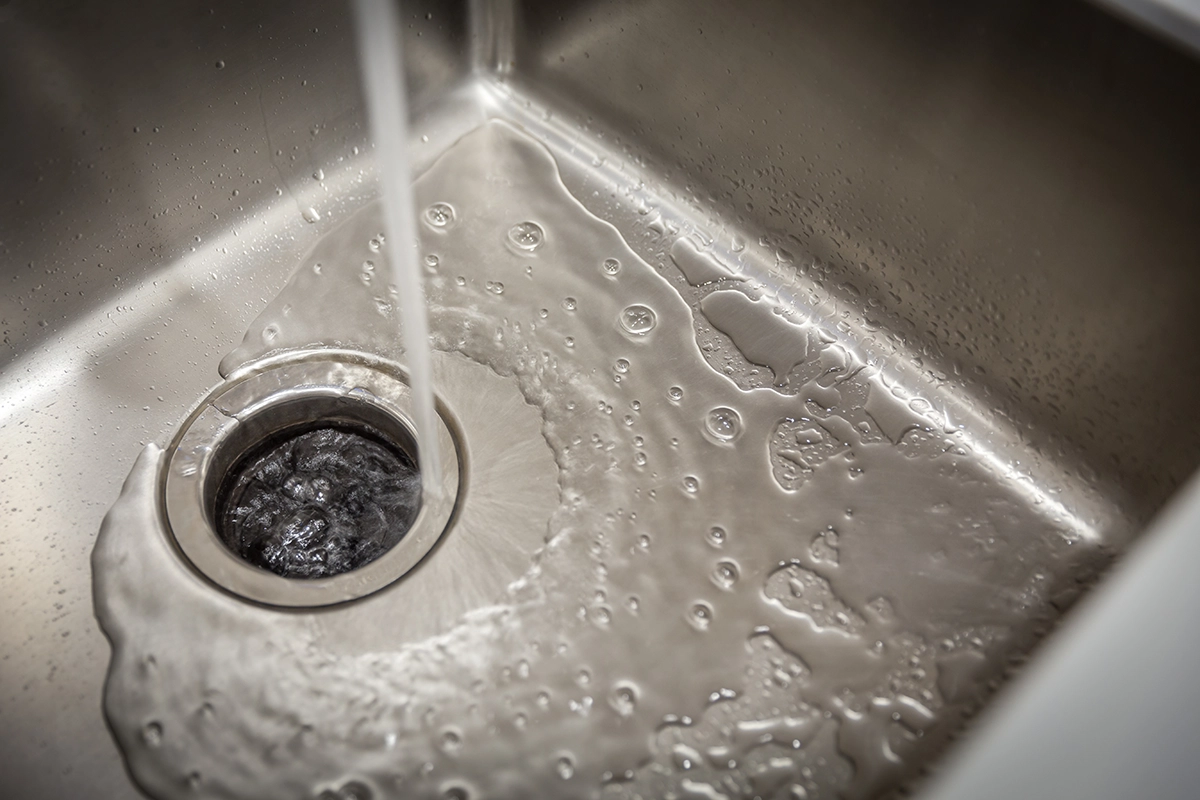Clogged Garbage Disposal? Try These Fixes First
Home /
A clogged garbage disposal is a frustrating but common kitchen issue. One moment you’re cleaning up after dinner, and the next, the sink won’t drain, water is backing up, and you’re left wondering what went wrong. Whether it’s due to food scraps, grease, or an accidental drop of silverware, a jammed garbage disposal can quickly throw off your kitchen routine.
At Clog Heroes in Fredericksburg, VA, we’ve seen every kind of disposal clog imaginable—and fixed them all. This guide will help you understand the signs of a clog, how to safely troubleshoot it, and when it’s time to call in the pros.
Signs Your Garbage Disposal Is Clogged
Before jumping into solutions, it’s helpful to know what to look for. Common signs of a clogged garbage disposal include water backing up into one or both sides of the sink, a humming noise when the disposal is turned on (but no grinding), a complete lack of sound or movement, a foul odor coming from the drain, water draining slower than usual, or gurgling noises after the disposal runs. These symptoms typically point to a clog in the unit itself or somewhere in the drain line beyond it.
Safety Steps Before Fixing a Clogged Garbage Disposal
Before attempting any DIY fix, always disconnect the power. This is critical for your safety. You can unplug the unit from under the sink if it has a visible cord, or switch off the circuit breaker that powers your kitchen outlets. Never put your hand inside the disposal, even with the power off, unless you’re completely sure it’s safe and you’re using the right tools.
Try Resetting the Unit
Most modern disposals come with a reset button on the bottom of the unit. If the disposal has overheated or jammed, the motor may have shut off automatically. Look underneath the unit for a small red or black button, press it once, and if it stays in, try running the disposal again with cold water. This quick fix works more often than you’d think.
Manually Rotate the Blades
If the reset doesn’t work and the disposal hums without spinning, something may be jamming the blades. Many units come with a hex hole (usually 1/4 inch) on the bottom for this exact reason. Insert an Allen wrench into the hole and turn it back and forth. You may feel resistance at first, but with a few turns, you can often dislodge the blockage. Once the blades are moving freely, try powering the unit back on.
Use Tongs, Not Hands, to Remove Obstructions
Sometimes you can see the clog—such as a stuck utensil, fruit pit, or fibrous vegetable peel. In these cases, use tongs, pliers, or needle-nose pliers to remove the object. Never use your fingers on a clogged garbage disposal, even with the power off. Check the chamber for smaller debris that may be caught under the blades. Removing even a small object can restore full function in seconds.
Clear Grease and Buildup With Natural Cleaners
If the disposal spins freely but still isn’t draining, grease or food buildup may be clogging the line. Try this natural solution: pour ½ cup of baking soda into the disposal, then add 1 cup of white vinegar. Let the mixture fizz for about 10–15 minutes. Rinse with hot water while running the disposal for 30 seconds. This helps break up buildup and neutralize odors, especially if grease or soap residue is part of the problem.
Inspect and Clean the P-Trap
If water still won’t drain, the clog may be in the drain trap under your sink. This curved pipe is designed to catch debris but can get blocked. Place a bucket beneath the trap to catch water, loosen the slip nuts on both sides of the trap using channel-lock pliers, and remove the trap. Check for clogs or buildup, clean it thoroughly, then reassemble and test the drain. If water flows freely afterward, you’ve found the culprit.
Avoid These Garbage Disposal Mistakes
Most clogged garbage disposal issues are preventable with proper use. Avoid pouring grease or oil down your disposal, as it can cause clogs and contribute to sewer overflows, according to the EPA. Also skip fibrous foods like celery, corn husks, and onion skins, as well as starchy foods like potato peels or pasta, which swell and stick. Don’t dispose of coffee grounds or eggshells, which can create sludge, and never allow non-food items like twist ties or plastic pieces to fall in. Always run cold water during and after using the disposal to help flush out particles and keep the blades and pipes clean.
When to Call a Professional Plumber
If you’ve tried these fixes and your clogged garbage disposal is still giving you trouble, it’s time to call in the pros. There could be a serious blockage in your main drain line, internal damage to the disposal motor or blades, electrical issues causing failure to start, or an aging unit that needs to be replaced. At Clog Heroes, we specialize in fast and affordable garbage disposal repair and installation throughout Fredericksburg, VA. Whether it’s a simple jam or a complete unit replacement, we’ll have your kitchen back in working order in no time.
Trust Clog Heroes for Fast Help in Fredericksburg
Don’t let a clogged garbage disposal slow you down. Clog Heroes offers same-day plumbing service to get your home back on track. Our licensed plumbers show up on time, clean up after the job, and explain the repair process clearly—no surprises, just results. Call now or book online for professional garbage disposal service in Fredericksburg, VA. Your sink will thank you!

